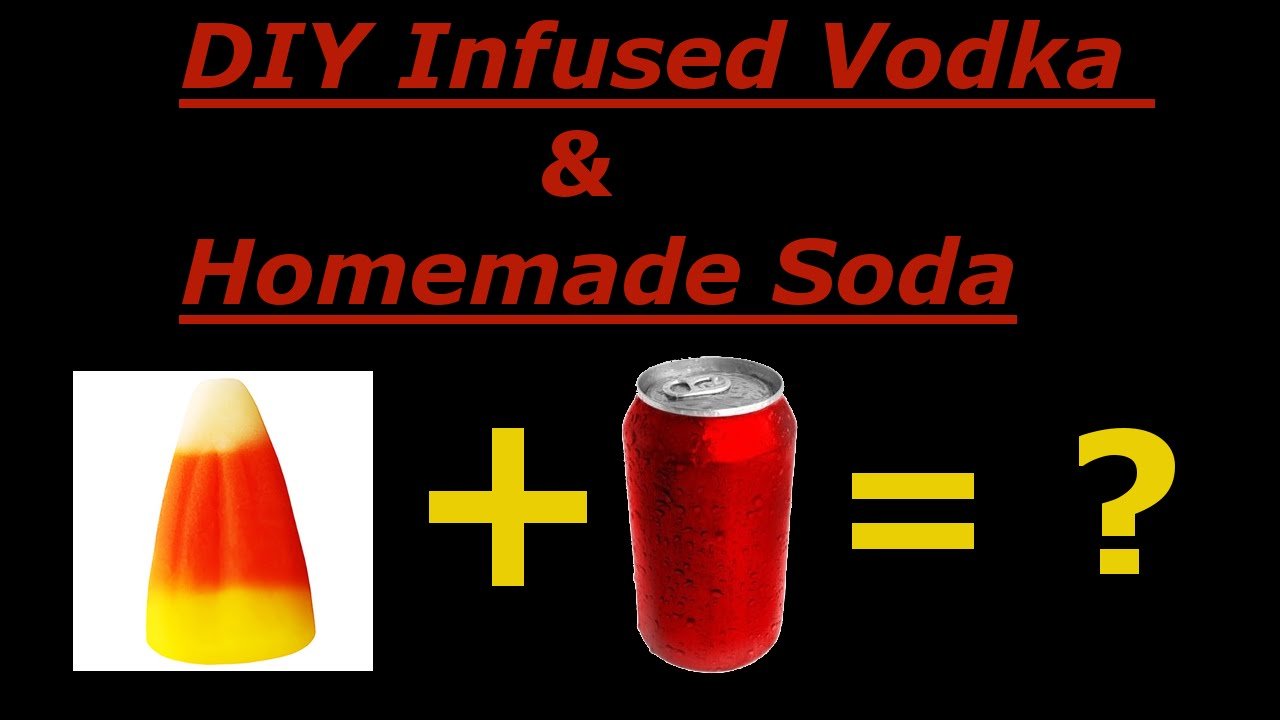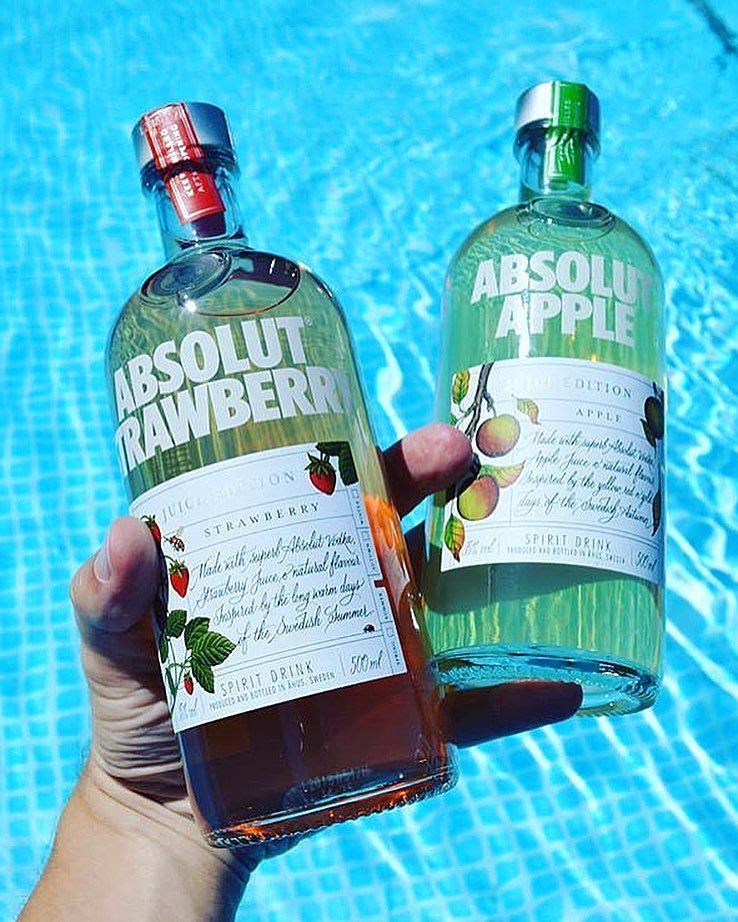What Is Vodka Made Of
Among all spirits, Vodka is one of the most popular ones. Especially in Eastern Europe, no other spirit does come even close to reaching similar popularity. And surprisingly, according to Worldatlas.com, the United States are following suit and rank in position 6 of the countries with the highest per person Vodka consumption. And the United Kingdom is not far behind on position 9.
However, where North-Eastern Europeans prefer to consume their spirits neat as a shot, other nations love their highballs and cocktails. And the high versatility of Vodka certainly is one reason that drives its consumption in Western countries. So it’s about time to find out what Vodka is made of and why it has such a neutral taste compared to other favorite spirits like Whiskey, Tequila, and the like.
Raw Ingredients And The Typical Flavour Profiles They Impart To Vodka
Wheat: subtle aniseed and pepper, lemon zest. Rye: nutty sweetness, rye bread, brazil nuts.Maize/corn: buttery, corn-on-the-cob.Barley: bready, lightly nutty, brioche sweetness.Potato: creaminess of texture and fuller flavour often slight vegetable notes.Grape: strangely, Cîroc, the leading grape vodka has a slight lemon zest character.
Grain, especially wheat, dominates vodka production as the preferred base with the use of potato also well established. So predominant is the use of grain that the latest EU regulations stipulate, “To take into account consumer expectations about the raw materials used for vodka, especially in the traditional vodka producing Member States, provision should be made for adequate information to be provided on the raw material used where the vodka is made from raw materials of agricultural origin other than cereals and/or potatoes.” Meaning vodkas made from grape and other non-traditional ingredients must declare this on their labels.
Potato varieties used for vodka production are specifically chosen due to their high starch content, typically 25% compared to 17% for eating potatoes. Small potatoes are favoured for distilling, as they are higher in starch than bigger potatoes which are swollen with water. Even with these high starch varieties, it takes 16 tonnes of potatoes to make 1,000 litres of spirit at 96.4% alc./vol.
Cutting And Bottling The Vodka
Cutting is the process of switching containers that are collecting the distillate coming out of the condenser. You basically cut the alcohol streaming down as you switch to other containers. But cutting isnt simply just changing the containers, it also requires timing.
As you distill your wash and temperature rises to 175F to 176F, you will see that the distillate will start dropping and your container is slowly catching it. These first distillates are called the foreshots. Foreshots are the first approximately 5% of your run. This substance contains methanol which is poisonous and extremely harmful to the body so its best to discard and throw them away. Remember to label the bottle in order to avoid confusion and accidents.
After the foreshots, you have to cut, change your container, and start collecting the heads. The heads are the next 30% of your distillate. It is filled with volatile alcohols. One particular volatile alcohol in this distillate is acetone. It has a solvent-like smell but is safe to drink. Drinking the heads will not cause any harm to your body but will result in an extreme hangover. Continue collecting the heads until the temperature reaches 195F.
DIY Distilling
You May Like: What Alcohol Has The Lowest Calories
Whey: Broken Shed Premium Vodka
Whey is the liquid that remains after milk has been curdled and strained, and its a typical byproduct of the cheese-making process. Its also the basis of popular protein supplements. So, its probably not the first thing you think of when you ponder vodka. But New Zealands Broken Shed uses whey and local water to produce a full-bodied vodka with sweet notes of vanilla and a touch of anise on the finish.
Create Your Yeast Starter

Sanitize your mason jar. There are many ways to do this, but try to avoid using any harsh chemical residue.
While youre sanitizing, heat water to exactly 110 degrees. Pour four ounces of this water into your sanitized jar. Remember that transferring water into new containers can reduce its temperature, so consider warming those containers before using them. We want to keep the water as close to 110 degrees as possible before it goes into the jar.
Add two teaspoons of sugar to the hot water. Many people use simple white sugar for this, but you can modify the flavor of your drink by using other types of sugar instead.
Add your yeast to the mix, strictly following the instructions on its packaging. These can vary somewhat, so always read the packaging for what type of yeast you bought.
Stir the mixture, then let it sit for about 20 minutes. You should see the volume double over this period.
Also Check: What To Mix With Svedka Mango Pineapple
Get Ready For Distillation
Stills heat the fermented, relatively-low alcoholic wash to a temperature that is greater than the boiling point of alcohol, yet less than the boiling point of water. In this way, the alcohol vaporizes while the bulk of the water does not. The vaporized alcohol travel up into the column, pipe or tube of the still. External cooling in the form of cold water is applied to the column, pipe or tubing, causing the vaporized alcohol to cool and condense back into liquid.
This alcoholic liquid is collected and becomes vodka.
Stage : Fermentation & Filtration
MALT serves as the agent that would convert starch to sugar. Meanwhile, YEAST enzymes are necessary in order to produce alcohol. The enzymes break down the mash and extracts the oxygen.
The whole process would take 2-4 days to complete.
Read Also: Who Makes Member’s Mark Vodka
Adding The Finishing Touches
Add Yeast To The Fermentable Medium
Hydrate the appropriate amount of dried distillers or other desired yeast and add it to the liquid. Stir with a clean, sanitized spoon to evenly disperse the yeast.
If using an airlock, the airlock will bubble during active fermentation, and the bubbling will slow dramatically or cease altogether as the liquid becomes completely fermented. Keep the fermenting liquid in a room that is about 80° 85° F to facilitate good, efficient fermentation. Alternately, use a heating belt in cold areas.
- Distillers yeast will ferment cleanly, produce a high amount of alcohol , and produce a relatively low amount of unwanted compounds such as alcohols other than ethanol. The amount of yeast used will depend on the specific brand or type of yeast used.
- Nutrients may be included with the yeast in the yeast packet. Yeast nutrients are needed when fermenting a medium that is low in nutrients, such as sugar solutions, but they can also improve fermentations when used with nutrient-rich mediums such as those made from grains.
Read Also: Gluten Free Vodka List
Collecting Your Potato Vodka Distillate
Collecting your vodka is probably the most satisfying part of this entire process. This step is part art, part science. It takes a sensitive and experienced distiller to get this process just right.
If you miss the mark slightly on a few of these steps, dont get discouraged. Youll still have a good quality product and youll only get better with practice.
/9the Origin Of Vodka And The Process Of Making It
Vodka is a strong, clear alcoholic drink that is said to have its origin in Russia. As we traced the history of vodka, we came to know that it is defined as a clear distilled alcoholic beverage composed primarily of water and ethanol and sometimes flavorings. If reports are to be believed, the first documentation of vodka for the Russians wasnt until 1751. The Russian word for vodka means water. According to historians, the word vodka was written for the first time in 1405 in Polish court documents. It was during 1940s that vodkas popularity increased significantly, and is still one of the most popular spirits in the world. While it was first used as a medicine in medieval times, at the global level there is an endless argument between Russia and Poland regarding who produced it first. While this argument seems to be endless, let us shift the focus and tell you about the art of making vodka and how it has evolved over a period of time.
Also Check: How Does Ciroc Taste
Is It Hard To Make Whiskey At Home
Its easy to make whiskey. But great whiskey, now thats a different story. The key lies in the waiting part. Whiskey is one of those spirits where age does matter. The wood from the barrels tends to break down the harsher flavors in the alcohol, leaving you with a smoother taste the longer it stays in there.
Check The Alcohol Content

Once you have the hearts of your run separated, youll want to cool them to about 68 and use an alcometer to measure the alcohol content. To be considered vodka, the distillate should have an ABV of between 40 to 90% .
If you find the vodka too strong, you can dilute it with filtered water. If the vodka is too weak, you can redistill it to increase the alcohol content. In fact, some premium brands of vodka are distilled 4 or 5 times. However, keep in mind that the foreshots, heads and tails must be discarded in EVERY run.
Recommended Reading: Kirkland Spiced Rum Calories
What Is The Main Ingredient In Vodka
Water is the main ingredient in most brands of vodka. After all, vodka comes from the old Slavic word voda, which translates to little water. The typical ABV for vodka is 40%, making the water content around 60% and resulting in an 80-proof spirit. While the United States ABV minimum is 40%, the European Unions is 37.5%, allowing the water content to be slightly higher. Either way, itll stay liquid in your freezer.
While some brands of vodka, like Devil Spring and Balkan 176°, have an ABV of up to 88%, theyre intended to be diluted by the consumer before ingesting, like Everclear and other rectified spirits.
Now that you know all about this unassuming spirit, its time to mix up one of these choice cocktails.
Vodka Made From Different Grains
Smirnoff is the largest Vodka brand in the world. Once founded in Moscow, Russia by P.A. Smirnov, Smirnoff has a turbulent history. From being the official Vodka supplier of the Winter Palace to closing its doors during Russia’s “dry law”, facing bankruptcy and being sold. Smirnoff has seen it all and survived it, too. Better than anyone in the Vodka business, actually.
Their top-selling Vodka Smirnoff 21 is made of different grains and filtered ten times for extra smoothness. And they are also co-responsible for the invention of the Moscow Mule in 1941.
Read Also: Crown Apple Mixed With
What Even Is Vodka
According to the United States Alcohol and Tobacco Tax and Trade Bureau, vodka is a neutral spirit distilled or treated after distillation with charcoal or other materials so as to be without distinctive character, aroma, taste or color, which is bottled at not less than 40% alcohol by volume .
In more basic terms, vodka is water mixed with ethanol until it reaches a proof of 80, and no less. The spirit isnt supposed to take on much of the flavor of its alcohol source, unlike the way gin gets flavor from juniper berries or tequila does from blue agave. Flavored vodkas are regulated under a different set of criteria which allows them to have fruit, citrus or herb additives.
Things To Remember Before Making Alcohol At Home
- Safety comes first. Whether it’s wine or spirits, inexperienced and careless homebrewers are always at risk of unwittingly using harmful ingredients that can be lethal or cause blindness to those that drink them.
- Distilling alcohol without a license is illegal. While non-commercial brewing of beer and fermenting of wine are allowed almost everywhere, distilling alcohol without a license is prohibited, as in most countries.
- Making alcohol requires passion. If you want to make alcohol, it should be because you really want to. The best homebrewers take pride in being able to come up with their own drink and therefore are willing to put safety on top of everything.
- Making alcohol requires a lot of sterilization. Any contaminant from any stage of the process that gets in, whether airborne or in the alcohol container you used, can cause the concoction to be malignant.
- Invest in the right tools. Do you want to make your own alcohol to save a few bucks by having your own stash at home? If youre not willing to splurge on a good drink, chances are youre not willing to spend extra on safety tools and equipment. Its not going to be worth saving money at the expense of compromising your health and that of others.
- Containers need to be sealed properly. Having a controlled environment and clean equipment is a must.
Also Check: Chattanooga Whiskey 1816 Price
The First Step Is Choosing Your Alcohol
So this will be your first step. Well, the first step should be commitment and determination to make something out of the comfort of your home. After that, you now have to pick what your alcohol would be.
Methyl alcohol is not very lethal. However, it will taste the same and also has the same color and smell.
The Fifth Step Is The Filtering
This step is not mandated. It is optional. During this stage of the process, the harmful admixtures will then be taken away from the vodka.
If you do this at home, you can try the simplest method of performing distillation. If you want to perform the distillation, you can pour the drink once or twice over the water filter.
Don’t Miss: Svedka Strawberry Lemonade Drink Ideas
What Sort Of Potatoes Are Best For Making Vodka
Potatoes are abundant sources of starch that can be broken down into sugars and fermented into liquor. Potatoes are naturally abundant in starch which is an excellent source of fermentable sugar. To make potato vodka, remember that the best potatoes to use are the ones that have a higher starch percentage.
Typically, the potatoes which have higher starch contents are the ones that are fluffy and floury on the inside. A common type of potato you can use is roasting potatoes as they could be crispy on the outside yet still fluffy in the middle.
Vodka Production: Raw Ingredients

Words by Simon Difford
Vodka can be distilled from pretty much anything that can be fermented to make alcohol, but its mostly produced from potatoes, sugar beet molasses and cereal grains. Obviously, what ingredients are used to make a vodka will substantially influence its flavour.
Some crops grow better than others in certain climates and traditions and tastes have dictated that farmers and distillers in different countries favour different crops. The Poles use mostly rye to make their vodka, the Finnish favour barley and the Russians and indeed most other nations tend to use wheat.
Recommended Reading: Member’s Mark Alcohol
Four: Collecting Your Vodka
Collecting vodka is partially a matter of skill, especially when estimating how much of the process is done. Using labeled bottles and rotating them through as needed will help a lot.
The vodka itself is divided into four parts when it comes out of the still. Each part can be measured by its approximate volume if you paid attention to the quantity of liquid youre working with.
The first 5% of each run are the foreshots. Foreshots contain methanol, which is why were going to throw it out unless youre collecting that chemical for another reason. Methanol is poisonous to humans, and drinking foreshots can lead to blindness or death.
Do not drink the foreshots under any circumstances. Do not sniff them or taste them, no matter how curious you are. Just throw them down the drain and move on to the next part of the process.
The next ~30% of your run is known as the heads. The heads of a vodka run contain acetone, a volatile alcohol that is not particularly toxic but can give nasty hangovers. Acetone is also rather smelly, so its easy to identify when its in a bottle. In most cases, unless youre collecting acetone for some reason, its better to throw these out as well.
Once youre past the heads, its time for the high-quality hearts, which are the next 30% of a vodka run. This is the good stuff. The smell of acetone should be mostly gone here, replaced with the sweeter-smelling ethanol that we want. Bottle and save the clean hearts as you prefer.